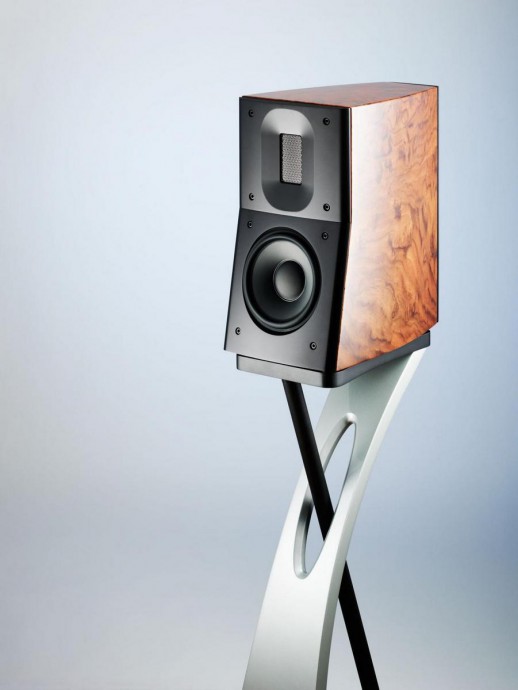Raidhoから、「Diamond D1.1」登場!!CES2013にて発表。
Price black $25500, walnut $28500 with stands.
Release at CES 2013.
Raidho has for the last 6 years been working with cones from Aluminum-oxide, as that is one of the hardest and stiffest materials, placed at a 9 on the Mohrs scale for hardness. We wanted a stiff material as to move the membrane resonances up and away from the pass-band. The ceramic cone from the C.1.1 has a first fundamental at app 12.5 KHz..(app 3dB peak) and we use the driver below app 3KHz where we cross it over with a 2.order roll-off . This is already in absolute terms an incredible performance…
Then why look further…?? I guess that is just the way we are, seeking and wondering what if…… Diamond is just a 10 on Morhs scale.. From nine to ten is not a big number, but in real-life values that one digit translates into a material that is 140 times harder than the ceramic we currently using… That mowed the resonance peak up where we cannot measure. Does it matter…. Oh yes it does… Is it Costly… Dont ask…
What is Diamond, and why bother.
Diamond is carbon locked in the tightest possible configuration. Natural Diamond is rare and formed under extreme pressure deep deep down under the ground. Pure diamond is pure crystalline bonded in an SP3 triangular structure, it’s totally glasslike transparent. (some say even liked by woman).
Industrial diamond is formed by a number of different industrialized processes where carbon atoms are forced so close together, (by pressure or by speed) that they can form the hard triangular Diamond SP3 bonds.
At Raidho we work with a process where the pressure to form the Diamond Bonds is created by building the needed pressure is formed by speed where our ceramic membranes are bombarded by carbon ions at speeds close to light. I our process we can reach around 50% SP3 bonds in the 10 um thick layer we build on top of the ceramic surface we have on our membranes. The rest of the material is SP2 bonded carbon “Graphite”
We have found that the 50% shearing between SP2 and SP3 is the optimum point for the process ability, the bonding and the improvement in stiffness ratio.
We could process the surface layer into more dense structures with more SP3, and less SP2 but then we would have to reduce the layer thickness and thus get less of the improved stiffness we are searching for. The balance is the internal stresses created in the diamond forming process. If stresses are too high the result becomes brittle and breaks the bonding to the substrate. With just an increase to 60% we would have to reduce the thickness to 1/5 and thus loose most of the stiffness gain. The Graphite Content makes the Diamond Layer Black(ish) in finish
With the Layer we have we are capable of improving the Stiffness of the cone so much that we push the first fundamental resonance outside the 20 KHz pass band we normally associate with HiFI, this means that the resonance peek (which by the way is “only” 3 dB) is damped more than 36dB by the crossover and is also pushed so far out that the energy content is the music signal is vanishing low. With Diamond membranes we remove this last bit of material coloration emerging from inner material vibrations in the Cone.
While the C series already set a solid mark for resolution and naturalness, the D-series just takes you that one step closer. To be Honest I was astound by the fact that something you can’t even measure on the finished speaker could make such a profound difference. It’s a totally new Ballgame, moving the target for the natural being there to a completely new level.”

